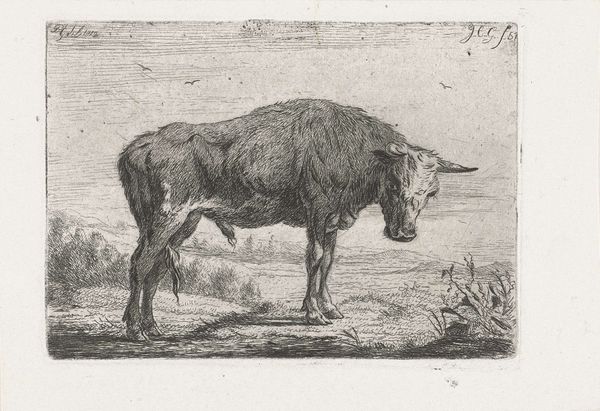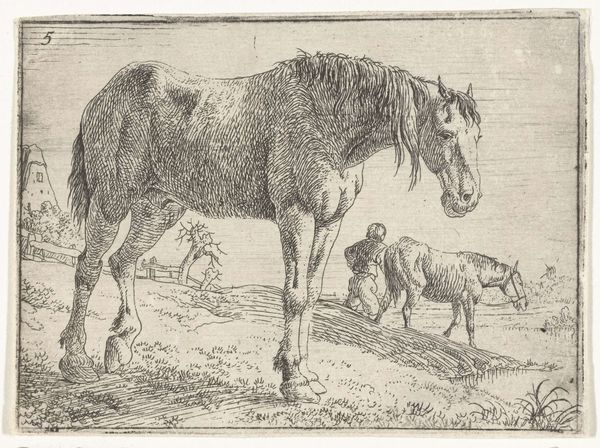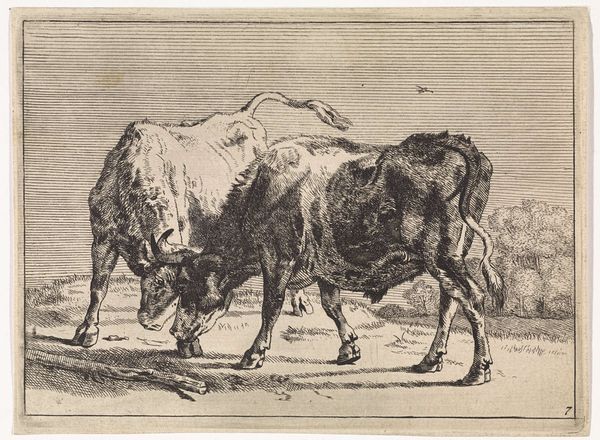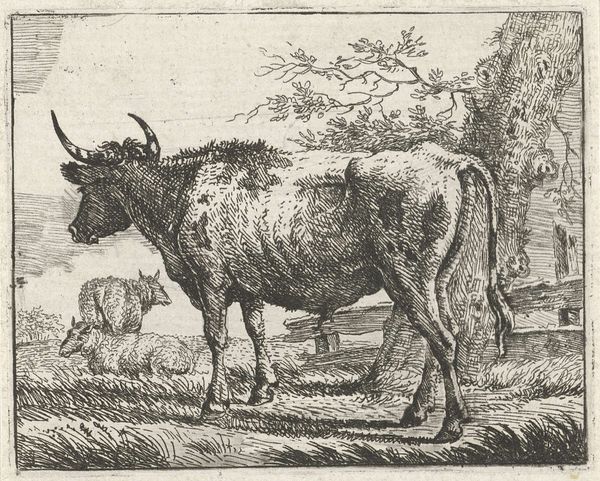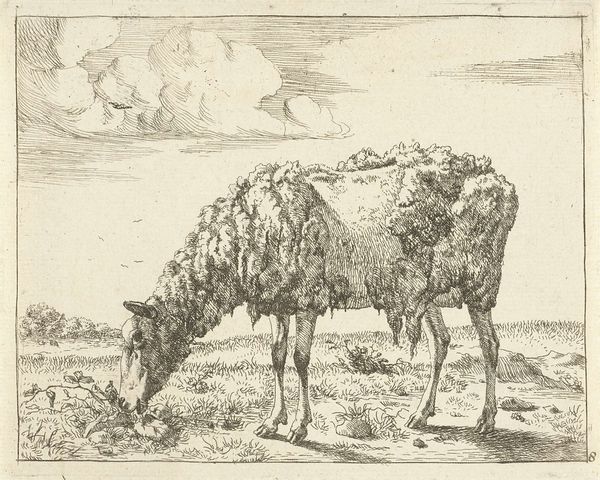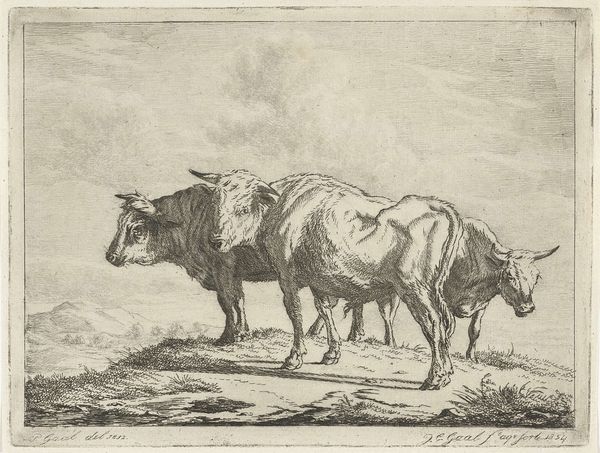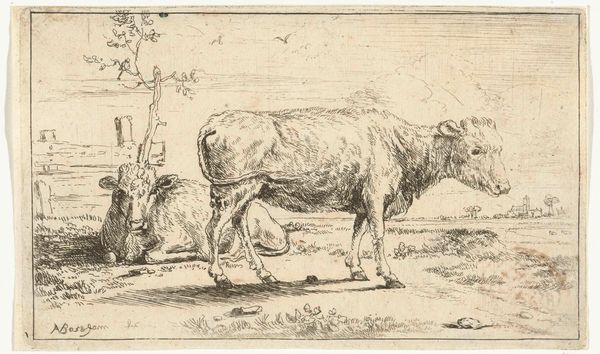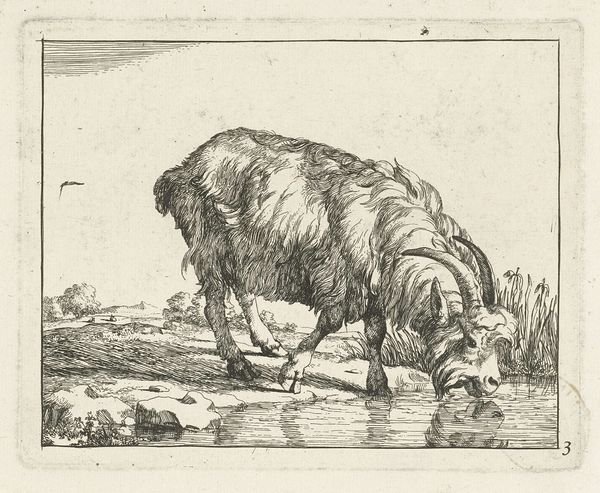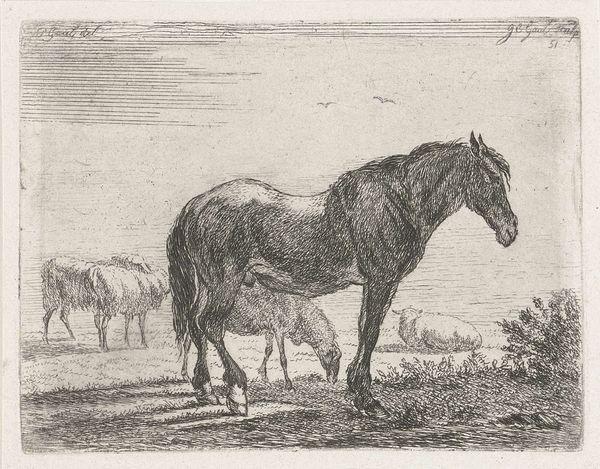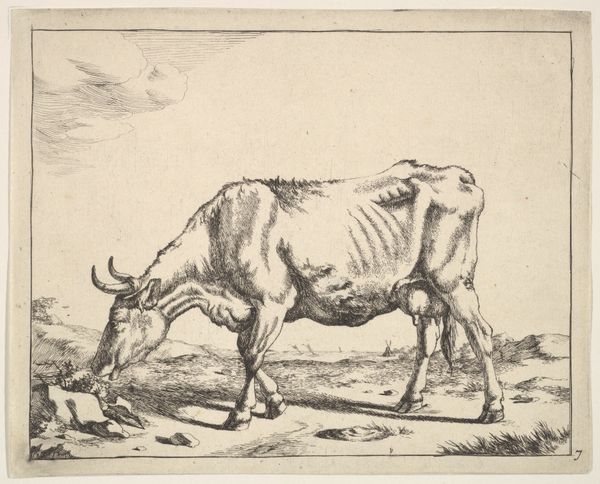
etching
#
animal
#
etching
#
landscape
#
realism
Dimensions: height 92 mm, width 127 mm
Copyright: Rijks Museum: Open Domain
Curator: This is Jacobus Cornelis Gaal's "Standing Bull," an etching from 1851 housed right here in the Rijksmuseum. Editor: He looks quite forlorn, doesn't he? Stoic but weary, like a monument in a desolate landscape. Curator: The landscape style really emphasizes the bull’s relationship to his environment. Consider how the artist used etching to produce very fine and precise details, contrasting texture of the animal and smooth horizon. Editor: I'm interested in that realism. What does it mean to depict this particular animal in this particular way? He is both majestic and vulnerable—simultaneously potent and world-weary. Is it perhaps about labour and the burden of masculinity in 19th-century rural Holland? Curator: It’s interesting you mention labor, considering the process behind this very print. The use of etching allowed for a mass production of this image, transforming it from a unique piece to something far more accessible and consumable. Editor: I see him as a symbol of marginalized and hyper-sexualized masculinity—reduced to labour and brute physicality. Note how the work centers the bull in the tradition of reproductive pastoral landscapes, framing animal husbandry not just as industry but as natural extension. This is about class, labor, gender and a changing economic landscape. Curator: You're situating the artwork perfectly within its socio-historical framework. The availability of prints like this one played a role in shaping both public and private spheres of taste and value—leading to how animals and nature were viewed within a modernizing world. Editor: Right, the print exists within this system, implicated in its narrative. Curator: Yes. Looking closely, you can also appreciate the physical skill of creating the intricate details using etching. You can feel Gaal's expert labor as an engraver; how he brought a seemingly straightforward bucolic scene to life through such rigorous technique. Editor: Absolutely. And, perhaps that’s a shared form of labor too, one artist’s labor creating an image that perhaps represented other kinds of arduous work for mass audiences. Curator: Well, whatever the various social implications, I believe most of us can relate to feeling burdened at one point or another. Editor: Indeed, there's a very melancholic dignity in that exhaustion. Thank you for that nuanced look.
Comments
No comments
Be the first to comment and join the conversation on the ultimate creative platform.
